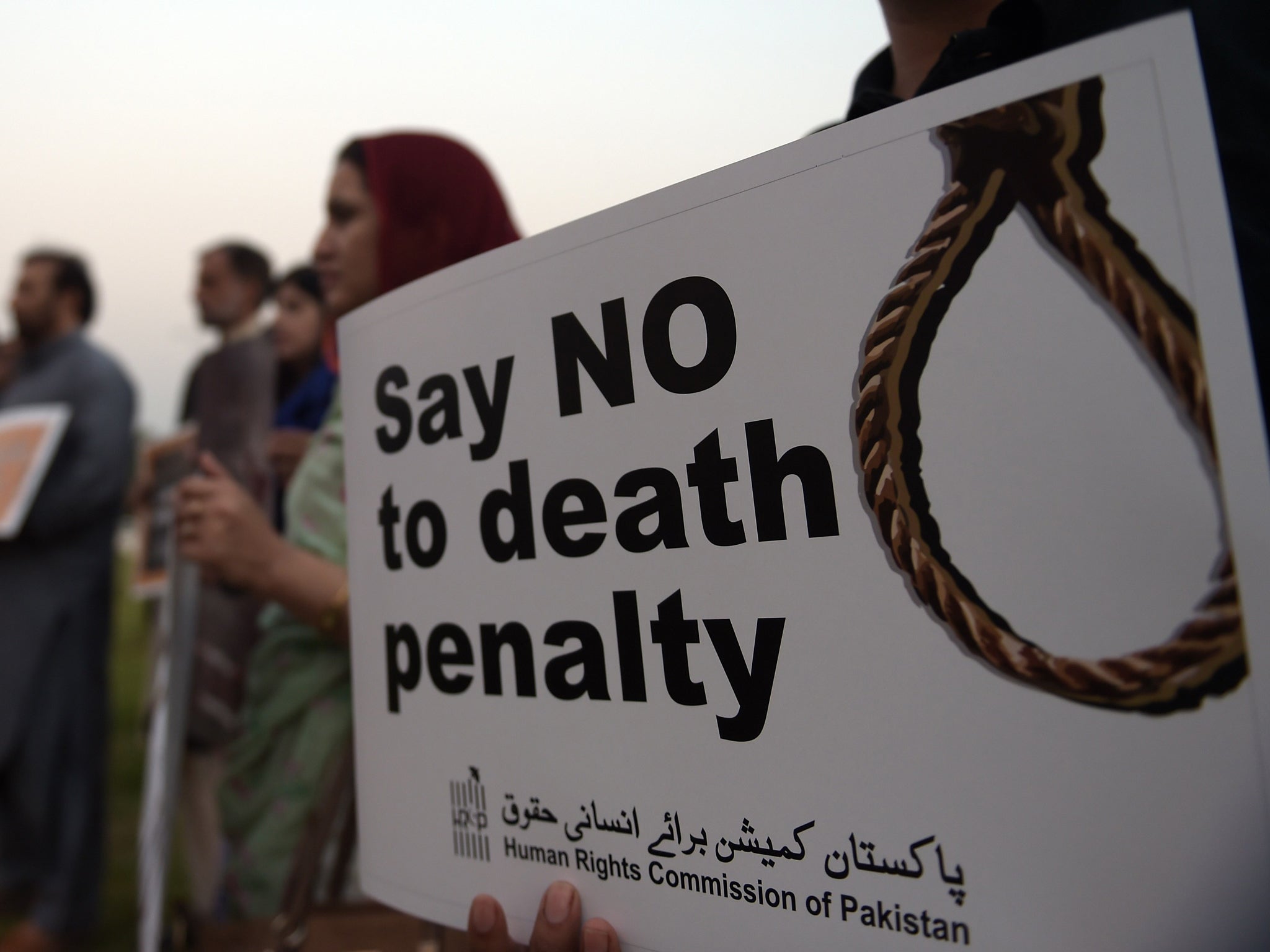There's no such thing as a humane execution - I know, because I've seen the autopsy photos
The use of the death penalty is at its highest for 25 years. And it shouldn't matter how executions are carried out: lethal injection has been described as "the chemical equivalent of burning at the stake"

My first real execution left me horrified.
Brandon Rhode was executed in Georgia in September 2010. Six days before his execution, terrified of what was to come, he tried to commit suicide by slashing his veins with a razor blade. Prison officials rushed him to hospital to suture his wounds and save his life so that – in the name of justice – the state could execute him one week later.
I only found out that British drugs had been used to kill Brandon Rhode after his execution. And it was only after his execution when I received the autopsy photos that I came to know that, like Rudy’s, Brandon’s execution had been torturous.
Brandon was executed using the then standard lethal injection ‘cocktail’: sodium thiopental (an anesthetic agent), pancuronium bromide (a paralytic agent) and potassium chloride (which stops the heart). This ‘cocktail’ was specifically designed to mask any suffering of the prisoner being put to death – the second drug serving to paralyse him so that he is unable to scream or thrash if something goes wrong.
Paradoxically, the drug that is used to make the lethal injection look humane to the public is precisely the one that can cause the most suffering to the prisoner.
Something did go wrong in Brandon’s execution. His autopsy photos show him with his eyes wide open, evidence that the anesthetic had failed and that - paralysed but still conscious - Brandon had suffered the excruciating pain of the administration of potassium chloride, a sensation that Supreme Court Justices recently described as “the chemical equivalent of being burnt at the stake.”
Having worked as an investigator into cases concerned with the death penalty – and specifically on lethal injection executions in the US – for many years, I thought I was pretty hardened to the subject. But as I watched the guards drill into Rudy Jones’ ankle in a botched execution attempt in the first episode of Peter Moffat’s fictional drama, Undercover, whatever professional detachment I’d built up over the last six years fell away.
In the first episode of Undercover, Peter Moffat achieved something I’ve spent years fighting to do: expose the myth that lethal injection is in some way clean and clinical, a “humane” method of execution.
As Undercover illustrated so deftly, when lethal injection executions go wrong, the result is torture. Viewers may have wondered if the execution scene in Undercover was exaggerated for dramatic effect. Sadly, real life executions can be just as bloody and brutal.
Oklahoma prisoner Clayton Lockett, for example, moaned for an hour as officials jabbed his body in fruitless attempts to find a vein. Ultimately they hit an artery in his groin causing blood to spray over a medic’s white coat. After some back and forth with the state’s Governor about exactly how one might go about halting an execution, proceedings were called off. Clayton died of a heart attack behind the curtain.
And Undercover’s hour-long execution lasted only half as long as that of Arizona prisoner, Joseph Wood, whose lawyers convinced the Supreme Court to assemble and consider staying the execution while the state was still attempting to kill him. The Justices were still arguing the toss when Wood died on the gurney, just shy of the two-hour mark.
Lethal injection is unquestionably grisly. But its brutality is not all blood and gore. Perhaps the most chilling moment in the show was Louisiana’s tuxedoed Assistant Attorney General reassuring a Judge that Haysbert’s execution could press ahead because “we don’t think his breathing is actual breathing…it’s a kind of snorting”.
This kind of argument, distant and dehumanising, is familiar in states’ legal submissions in death penalty cases. It reduces a human being to a process which the law says must go ahead. The kind of process where trying to kill yourself ahead of an execution is deemed to be a “misdemeanour”, and where you can’t have a cigarette for your last meal, because it’s “bad for your health”.
As the number of death penalties worldwide skyrocket, it’s more important than ever to emphasise that there’s no such thing as a humane execution. The use of the death penalty is at its highest in 25 years, with three countries (Saudi Arabia, Iran and Pakistan) accounting for almost 90 per cent of the killings. After what I’ve seen, this is more than unacceptable.
Join our commenting forum
Join thought-provoking conversations, follow other Independent readers and see their replies
Comments